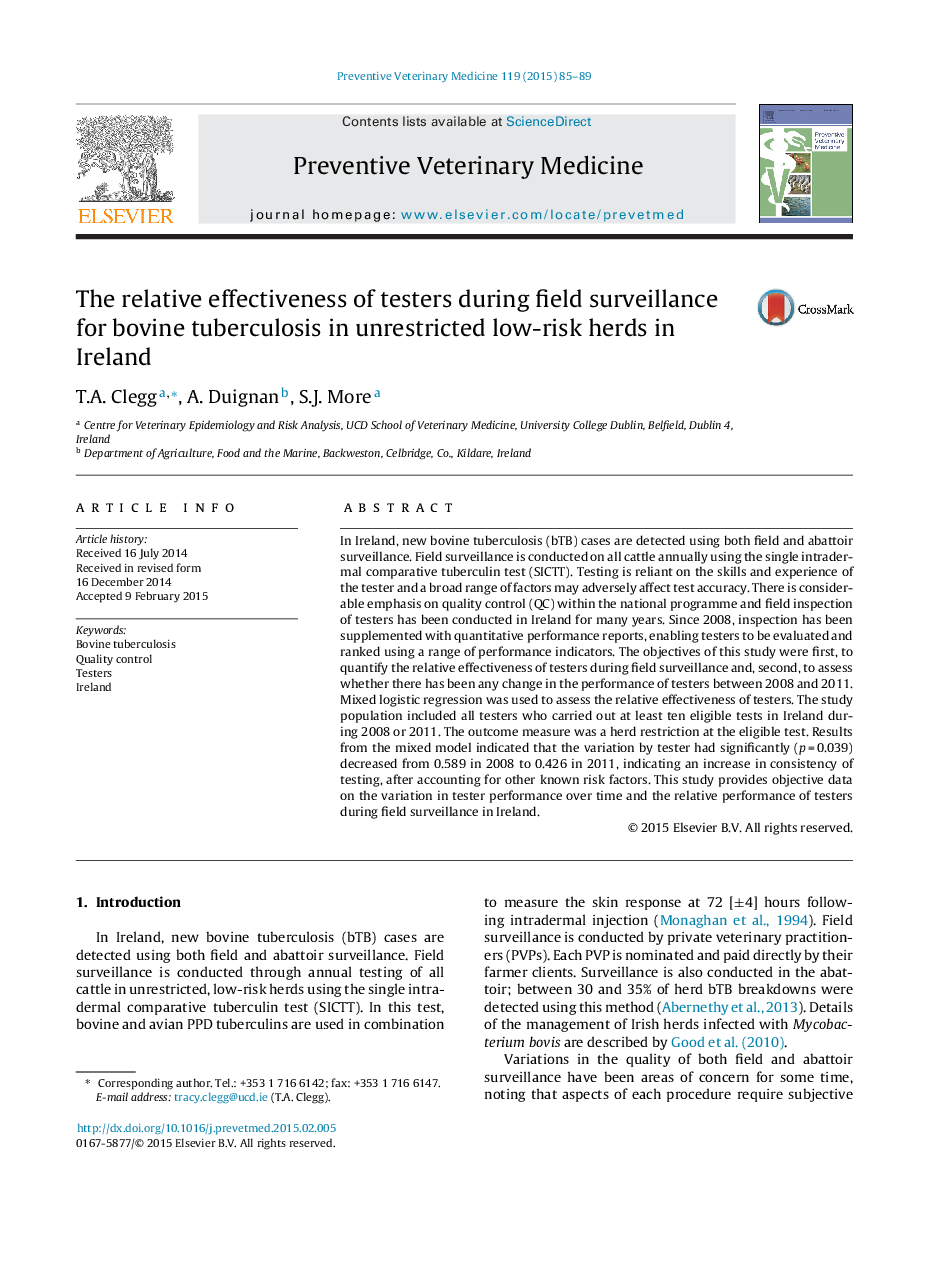| Article ID | Journal | Published Year | Pages | File Type |
|---|---|---|---|---|
| 2452414 | Preventive Veterinary Medicine | 2015 | 5 Pages |
Abstract
In Ireland, new bovine tuberculosis (bTB) cases are detected using both field and abattoir surveillance. Field surveillance is conducted on all cattle annually using the single intradermal comparative tuberculin test (SICTT). Testing is reliant on the skills and experience of the tester and a broad range of factors may adversely affect test accuracy. There is considerable emphasis on quality control (QC) within the national programme and field inspection of testers has been conducted in Ireland for many years. Since 2008, inspection has been supplemented with quantitative performance reports, enabling testers to be evaluated and ranked using a range of performance indicators. The objectives of this study were first, to quantify the relative effectiveness of testers during field surveillance and, second, to assess whether there has been any change in the performance of testers between 2008 and 2011. Mixed logistic regression was used to assess the relative effectiveness of testers. The study population included all testers who carried out at least ten eligible tests in Ireland during 2008 or 2011. The outcome measure was a herd restriction at the eligible test. Results from the mixed model indicated that the variation by tester had significantly (p = 0.039) decreased from 0.589 in 2008 to 0.426 in 2011, indicating an increase in consistency of testing, after accounting for other known risk factors. This study provides objective data on the variation in tester performance over time and the relative performance of testers during field surveillance in Ireland.
Related Topics
Life Sciences
Agricultural and Biological Sciences
Animal Science and Zoology
Authors
T.A. Clegg, A. Duignan, S.J. More,
